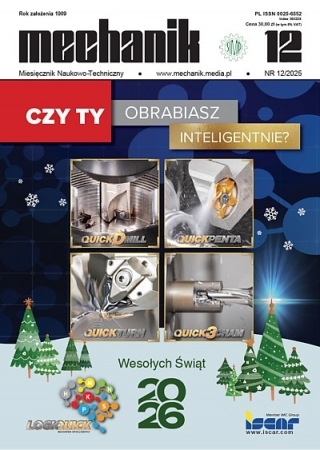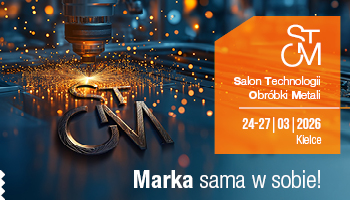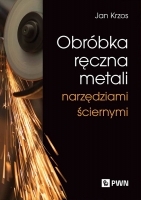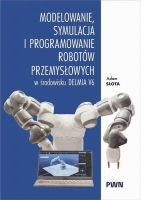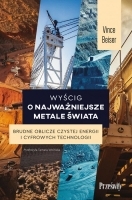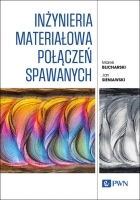Influence of machining conditions on friction in metal cutting process – A review *
Wpływ warunków obróbki na tarcie w procesie skrawania metali – przegląd literatury
Mechanik nr 04/2019 - Obróbka skrawaniem
ABSTRACT: This paper presents a range of variable machining factors which influence substantially friction directly or by the tool wear developed in the cutting zone. The group of direct factors include the workpiece and cutting tool materials coupled, the cutting/sliding velocity, cooling media supplied to the tool-chip contact zone, modification of the tool contact faces by micro-texturing. Special attention was paid to the tool wear evolution and its pronounced effect on changes of the contact conditions.
KEYWORDS: metal cutting, friction, contact conditions, wear
STRESZCZENIE: Przedstawiono wiele zmiennych czynników procesowych, które istotnie wpływają – bezpośrednio lub pośrednio przez zużycie ostrza – na tarcie występujące w strefie skrawania. Grupa czynników bezpośrednich obejmuje: materiał obrabianego przedmiotu i narzędzia skrawającego, prędkość skrawania/poślizgu, media chłodzące dostarczane do strefy kontaktu oraz modyfikację powierzchni kontaktowych ostrza narzędzia przez mikroteksturyzowanie. Specjalną uwagę zwrócono na ewolucję zużycia narzędzia i jej dominujące oddziaływanie na zmiany warunków kontaktowych.
SŁOWA KLUCZOWE: skrawanie metali, tarcie, warunki kontaktowe, zużycie
BIBLIOGRAFIA / BIBLIOGRAPHY:
[1] Grzesik W., Rech J. “Methods and devices for measuring metal cutting friction and wear”. Mechanik. 2 (2019): 85–89.
[2] Grzesik W., Nieslony P. ”Prediction of friction and heat flux in machining incorporating thermophysical properties of the coating-chip interface”. Wear. 256 (2004): 108–117.
[3] Ruiz de Eguilaz E., Rech J., Arrazola P. “Characterization of friction coefficient and heat partition coefficient between an AISI4140 steel and a TiN coated carbide – influence of (Ca, Mn, S) steel’s inclusions”. Proc. IMechE – part J: J. Engineering Tribology. 224 (2010): 1115–1127.
[4] Arrieta I., Courbon C., Cabanettes F., Arrazola P.J., Rech J. “Preliminary study on the tribological behaviour of ferritic-pearlitic steels”. Proceedings of the conference MUGV. 7–8 June 2018. Bordeaux (France).
[5] Rech J., Arrazola P.J., Claudin C., Courbon C., Pusavec F., Kopac J. “Characterization of friction and heat partition coefficients at the tool-work material interface in cutting”. CIRP Annals – Manufacturing Technology. 62, 1 (2013): 79–82.
[6] Claudin C., Mondelin A., Rech J., Fromentin G. “Effects of a straight oil on friction at the tool-work material interface in machining”. Int. Journal of Machine Tools and Manufacture. 50 (2010): 681–688.
[7] Cabanettes F., Rolland J., Dumont F., Rech J., Dimkovski Z. “Influence of Minimum Quantity Lubrication on friction characterizing tool-aluminum alloy contact”. Journal of Tribology. 138 (2016): doi:10.1115/1.4031990.
[8] Pottirayil A., Kailas S.V., Biswas S.K. “Experimental estimation of friction force in lubricated cutting of steels”. Wear. 269 (2010): 557–564.
[9] Banerjee C., Sharma A. “Identification of friction model for minimum quantity machining”. J. Clean Production. 83 (2014): 437–443.
[10] Courbon C., Pusavec F., Dumont F., Rech J., Kopac J. “Tribological behaviour of Ti6AL4V and Inconel 718 under dry and cryogenic conditions – Application to the context of machining with carbide tools”. Tribology International. 66 (2013): 72–82.
[11] Cristino V.A., Rosa P.A., Martins P.A. “Cutting under active and inert gas shields: A contribution to the mechanics of chip flow”. Int. J Machine Tools and Manufacture. 50 (2010): 892–900.
[12] Settineri L., Faga M.G., Lerga B. “Properties and performances of innovative coated tools for turning Inconel”. Int. Journal of Machine Tools and Manufacture. 48 (2008): 815–823.
[13] Klocke F., Settineri L., Lung D., Priarone P.C., Arft M. “High performance cutting of gamma titanium aluminides: influence of lubricoolant strategy on tool wear and surface integrity”. Wear. 302 (2013): 1136–1144.
[14] Grzesik W. “Advanced machining processes of metallic materials”. Elsevier (2017).
[15] Sutter G., Molinari A. “Analysis of the cutting force components and friction in high speed machining”. Trans. ASME J. Manuf. Science Technol. 127 (2005): 245–250.
[16] Rech J., Claudin C., Grzesik W., Zalisz Z. “Characterization of the friction properties of various coatings at the tool-chip-workpiece interfaces in dry machining of AISI 4140 steel”. Proc. IMechE – part J: J. Engineering Tribology. 222 (2008): 617–627.
[17] Zemzemi F., Rech J., Ben Salem W., Dogui A., Kapsa P. “Identification of friction and heat partition model at the tool-chip-workpiece interfaces in dry cutting of an Inconel718 alloy with CBN and coated carbide tools”. Advances in Manufacturing Science and Technology. 38 (2014): 5–21.
[18] Faverjon P., Rech J., Leroy R. “Influence of MQL on friction coefficient and workmaterial adhesion during machining of cast aluminium with various cutting tool substrates made od PCD, HSS and carbides”. Journal of Tribology. 153 (2013): 041602-1.
[19] Grzesik W. “Friction behaviour of heat isolating coatings in machining: mechanical, thermal and energy-based considerations”. Int. Journal of Machine Tools and Manufacture. 43 (2003): 145–150.
[20] Grzesik W., van Luttervelt C.A. “An investigation of the thermal effects in orthogonal cutting associated with multilayer coatings”. CIRP Annals – Manufacturing Technology. 50, 1 (2001): 53–56.
[21] Settineri L., Faga M.G., Gautier G., Perucca M. “Evaluation of wear resistance of AlSiTiN and AlSiCrN nanocomposite coatings for cutting tools”. Annals of the CIRP – Manuf. Technology. 57, 1 (2008): 575–578.
[22] Settineri L., Faga M.G. “Laboratory tests for performance evaluation of nanocomposite coatings for cutting tools”. Wear. 260 (2006): 326–332.
[23] Enomoto T., Sugihara T. “Improving anti-adhesive properties of cutting tool surfaces by nano-/micro-textures”. CIRP Annals – Manuf. Technology. 59/1 (2010): 597–600.
[24] Grzesik W. “Advanced protective coatings for manufacturing and engineering”. Hanser Gardner, Cincinnati (2003).
[25] Holmberg K., Matthews A. “Coating tribology. Properties, techniques and applications in surface engineering”. Elsevier, Amsterdam (1994).
[26] Grzesik W., Zak K. “Friction quantification in the oblique cutting with CBN chamfered tools”. Wear. 304 (2013): 36–42.
[27] Grzesik W., Denkena B., Zak K., Grove T., Bergman B. “Energy consumption characterization in precision hard machining using CBN cutting tool”. Int. Journal of Advanced Manufacturing Technology. 85 (2016): 2839–2845.
DOI: https://doi.org/10.17814/mechanik.2019.4.33
* Artykuł recenzowany




![Fig. 1. Evolution of apparent friction coefficient vs. sliding velocity for various material pairs [5, 6]](/foto/article_small/17/evolution_of_apparent_friction_coefficient.jpg)
![Fig. 2. Evolution of macroscopic friction coefficient vs. sliding velocity for a range of steels vs. TiN/WC-Co pin, pin diameter dp = 17 mm, normal load Fn = 1000 N [4]. Symbols: R – standard, CG – coarse grain, GP – globular pearlitic, WB – with band](/foto/article_small/17/evolution_of_macroscopic_friction_coefficient.jpg)
![Fig. 3. Influence of lubrication mode and oil viscosity on friction coefficient: a) full lubricated, b) MQL [8]](/foto/article_small/17/influence_of_lubrication_mode.jpg)
![Fig. 4. Comparison of cooling supply method on friction coefficient [9]](/foto/article_small/17/comparison_of_cooling_supply_method.jpg)
![Fig. 5. Influence of sliding velocity and cooling medium on apparent friction coefficient in the tribo-test of Inconel 718 against TiN/WC-Co pin, dp = 9 mm, Fn = 1000 N [10]](/foto/article_small/17/influence_of_sliding_velocity.jpg)
![Fig. 6. Characteristic trends in the performance of friction coefficient at very high cutting speeds [15]. Workpiece material: low alloy 42CrMo4 steel, 1 – ap = 0.2 mm; 2 – ap = 0.5 mm (ap – depth of cut)](/foto/article_small/17/characteristic_trends_in_the_performance.jpg)
![Fig. 7. Influence of cutting tool coatings on friction coefficient when dry machining 42CrMo4 steel (AISI4140, 300 HB), WC-Co pin, dp = 9 mm, Fn = 1000 N, contact pressure p ≈ 2600 MPa [16]](/foto/article_small/17/influence_of_cutting_tool_coatings.jpg)
![Fig. 8. Ratio between ball wear area and sample trace depth vs. number of revolutions. Wear tests performed at 800°C [22]](/foto/article_small/17/ratio_between_ball_wear_area_and_sample_trace_depth.jpg)
![Fig. 9. Schematic illustration of lubrication action for cutting tools with smooth (a) and textured (b) rake face; c) and d) examples of nano-/micro-textures performed on milling inserts [23]](/foto/article_small/17/schematic_illustration_of_lubrication_action.jpg)
![Fig. 10. Changes of adhesion evolution (a) and friction coefficient (b) for textured rake faces from Fig. 9c in aluminium milling [21, 23]](/foto/article_small/17/changes_of_adhesion_evolution_and_friction_coefficient.jpg)
![Fig. 11. Friction coefficient evolution of the TiN coated sample under load 200 N (a) and TiN, TiAlN, AlTiN and CrAlN PVD nitride coatings as function of number of cycles after [24, 25]](/foto/article_small/17/friction_coefficient_evolution.jpg)
![Fig. 12. Confocal image of worn cutting tool (a) determination of the equivalent rake angle (b) after [26]. 1 – the shape of fresh tool, 2 – the shape of worn tool, 3 – planar equivalent rake face](/foto/article_small/17/confocal_image_of_worn_cutting_tool_determination.jpg)
![Fig. 13. Changes of friction coefficient at rake and flank faces after [26]](/foto/article_small/17/changes_of_friction_coefficient_at_rake_and_flank_faces.jpg)
![Fig. 14. Changes of friction coefficient on the rake face with tool wear resulting from variations of feed rate (a), tool nose radius (b) and depth of cut (c) after [27]](/foto/article_small/17/changes_of_friction_coefficient_on_the_rake_face.jpg)
